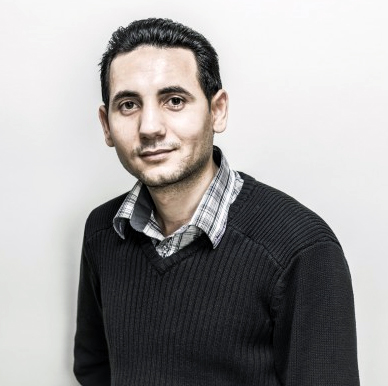
[tta_listen_btn listen_text=”Click to listen to this story” pause_text=”Pause” resume_text=”Resume” replay_text=”Replay” start_text=”Start” stop_text=”Stop”]
York University’s commitment to sustainability and innovation takes a significant leap forward with Professor Hany Farag’s pioneering work on green hydrogen integration.
As a professor in the Department of Electrical Engineering & Computer Science at the Lassonde School of Engineering, Farag is spearheading efforts to revolutionize Ontario’s energy landscape.
As previously reported, Farag has been tapped to receive funds from a new initiative to revamp Ontario’s energy system.

The newly created Hydrogen Innovation Fund, a funding initiative administered by the Independent Electricity System Operator, will invest more than $15 million to help integrate hydrogen into Ontario’s clean electricity system over the next three years. Farag is among the first group of researchers to successfully attain this funding.
A York Research Chair in Integrated Smart Energy Grids, Farag will use government support to advance the work he does at York’s Smart Grid Research Lab, which aims to seamlessly integrate green hydrogen resources into electricity systems to decarbonize not only the power grid but also hard-to-abate sectors such as heavy-duty vehicles, fertilizers and steelmaking.
In collaboration with Alectra Utilities, Bruce County, York University Facilities Services and other industry partners, Farag plans to investigate the implementation of green hydrogen plants (GHPs) across Ontario. Addressing the lack of infrastructure to support electricity and hydrogen integration, his research project will look to optimize GHP design and integration into Ontario’s power systems.
Farag’s scientific inquiry dovetails with York University’s brand message of shaping a sustainable future. York’s leadership in sustainability and its focus on the United Nations Sustainable Development Goals (SDGs) find resonance in Farag’s quest to lead the charge in decarbonizing energy production and utilization, particularly advancing SDG 7, which looks to “ensure access to affordable, reliable, sustainable and modern energy for all.”
It’s an important initiative.
Although the production of green hydrogen is currently expensive, with estimates ranging from $4 to $6 per kilogram, it remains pivotal in the quest for achieving net-zero carbon emissions by 2050. Across the globe, nations such as Canada and the U.S. are unveiling ambitious hydrogen strategies and investment goals for the forthcoming decades. In a significant move in 2020, the federal government released a hydrogen strategy with the aim of solidifying hydrogen’s role as a cornerstone tool in reaching the goal of net-zero emissions by 2050.
But while hydrogen holds promise as a potential game changer in combatting climate change, the shift toward “green” hydrogen faces significant hurdles. A 2021 report by the International Energy Agency highlighted a staggering statistic: global hydrogen production emitted 900-million tonnes of carbon dioxide, exceeding emissions from the aviation industry by roughly 180-million tonnes.
This alarming figure underscores the pressing need for a transition away from fossil fuel sources, as highlighted in a recent CBC report.
Although currently not recognized as a low-emissions fuel, there is optimism that hydrogen will emerge as a pivotal player in the fight against climate change. Its potential lies in serving as a cleaner alternative to fossil fuels in various sectors such as power generation, home heating and transportation – an area where Farag’s expertise shines through.
“In the Smart Grid Research Lab, we aim to develop new solutions that facilitate seamless and cost-effective integration of green hydrogen to decarbonize the power grid and hard-to-abate sectors/industries,” Farag says.
“This vision is aligned with York’s efforts to decarbonize our campus, where hydrogen could replace – either fully or partially – the existing natural gas–based co-generators.”
